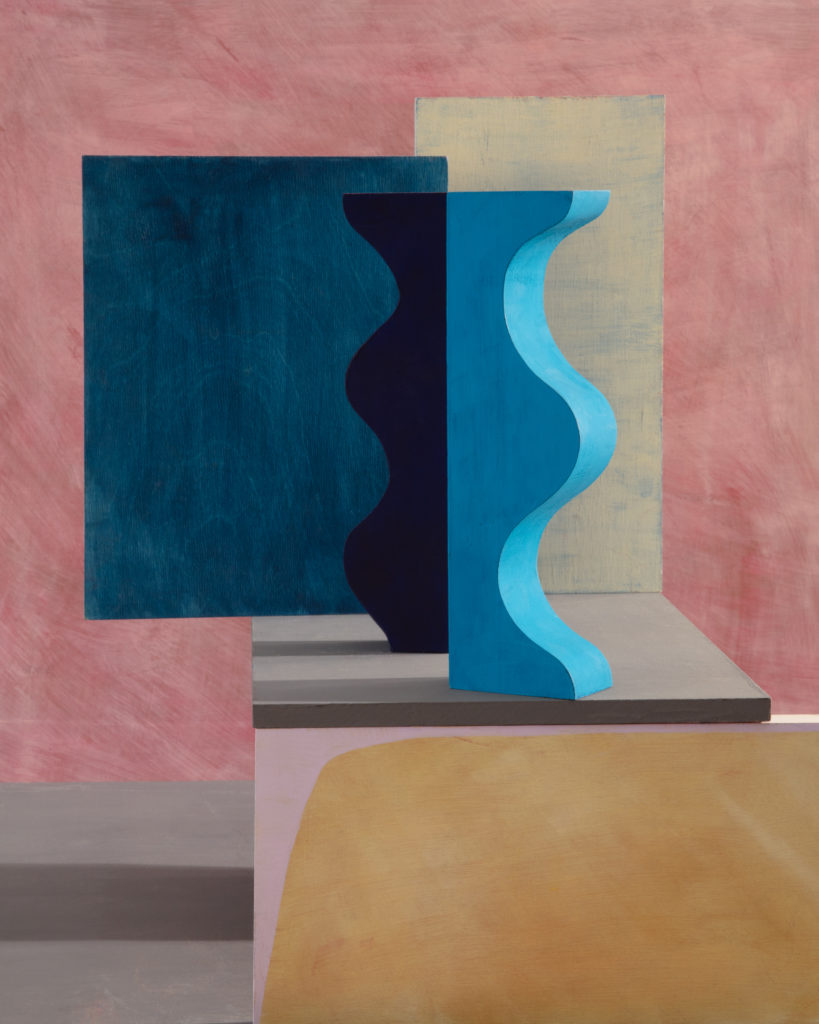Interaction of Space
Erin O’Keefe at Denny Dimin Gallery
As a student of Western art history, I have been asked to study the work of Pablo Picasso a little too frequently for my taste. I thought I could confidently say that I had puzzled over his collages—you know, the famous still lifes that incorporate wine bottles and cut up pieces of le journal—enough to be thoroughly fed up with seminar table conversations on representation and reality in pictorial space.

Imagine my surprise, then, when I fell in love with Seeing Things, an exhibition at Denny Dimin Gallery of works by Erin O’Keefe, whose photographs wrestle with the same themes—or should I say whose photographs nimbly dance around the same themes, as her work’s brighter colors and abstract curves are less lugubrious than Picasso’s, less concerned, perhaps, with making capital-A, capital-H Art History happen. (This is, after all, one of the Guerilla Girls’ proclaimed advantages of being a woman artist; that is, “not having to undergo the embarrassment of being called a genius.”)

O’Keefe is certainly not simply a poppier Picasso, however. First off, she is a photographer (a mistake for which you can be forgiven if you—like I— thought otherwise) who physically stages painted pieces of wood and then captures them at precisely the right perspective as to confuse their planes. In one photograph, wooden pillars which stood inches apart in the studio appear to lie tangent to one another, while in another several individual pieces align and coalesce into a single collaged object. All dimensional effects, like the casting of shadows and the perceived difference in color based on the way light falls, are real. It is often these shadows that give the images away as photographs, as they throw the images back into real space.
Her sculptural work engages similarly, using the mechanism of the mirror to create spatial confusion. (Early cameras, one might note, heavily relied on mirrors to direct light.) Stand in front of a series of wall mounted works in the first gallery and you will see reflected back not yourself, but the friend standing next to you; investigate another which appears to feature a continuous column, and you will find it is merely a stubby one, elongated by the simple trick of mirrors positioned at 45 degree angles.
My desire to deconstruct these works (at least mentally) as a means of understanding them reveals what’s most interesting about them. Though they ultimately intend to subvert, these works take as their given a collective understanding of what is real. Our knowledge of what space looks and acts like becomes of central importance to finding meaning in these works. We need to know what reality is in order to give art the power to challenge it.

To the extent that these images are of real spaces that have existed in time, they are not about representation, but about seeing. And when the question is about seeing, then it’s also about art, or that magical space between what we perceive and how things are, which—in its crystallized form—is art. By formalizing the tricks of perspective and blatantly making her work about sight, Erin O’Keefe allows us a space in which we can delight in something deliciously simple, though fundamental. Some might say that’s her genius.
Erin O’Keefe: Seeing Things
Denny Dimin
Until October 26
